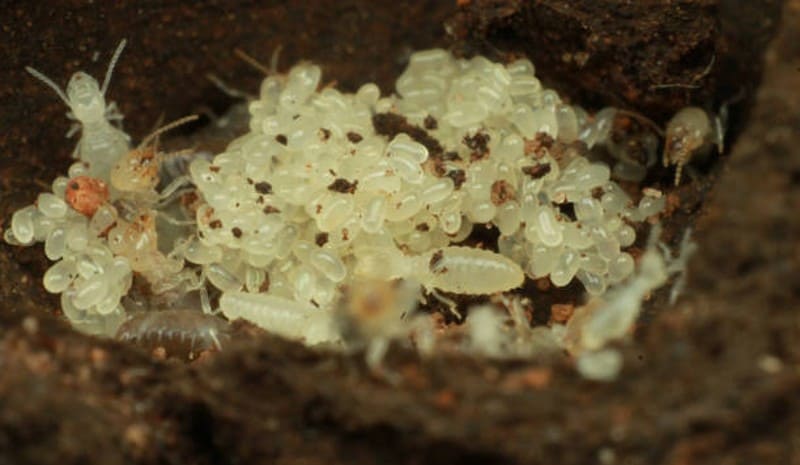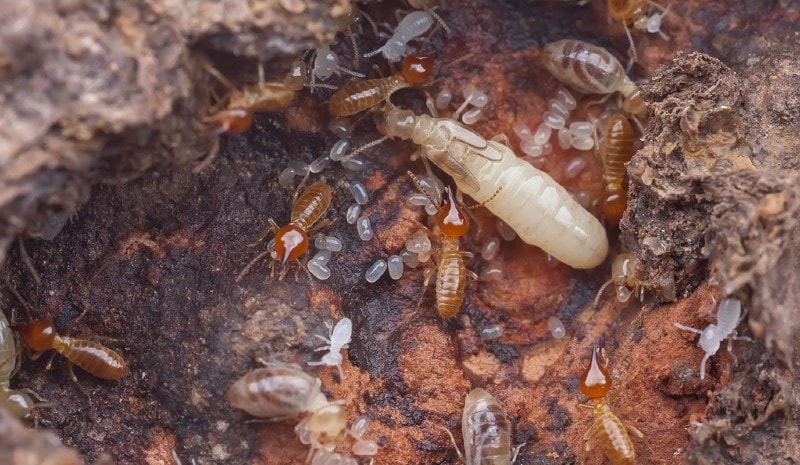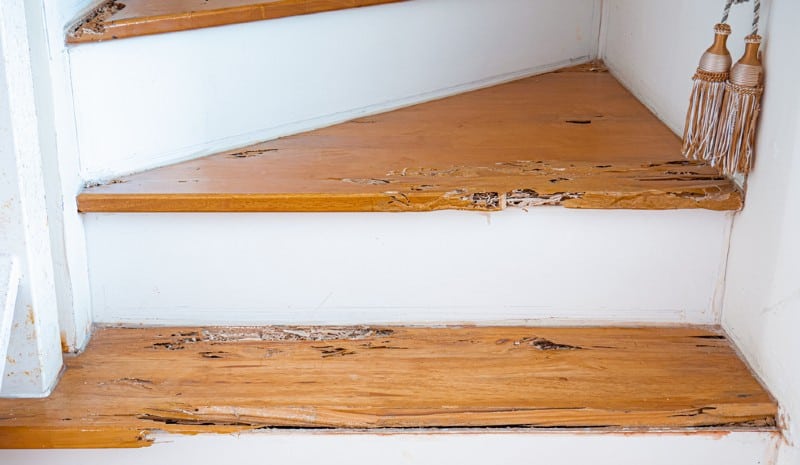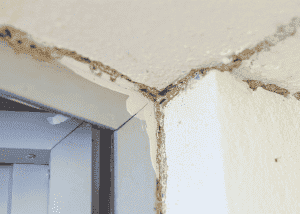Life Cycle Stages of Termites
As we learn more about termites, their life cycle stages become more crucial to understanding how to deal with an infestation. From the moment they hatch as eggs to the time they develop into adults, termites can cause immense damage to any wooden structures in their path. Knowing the different termite life cycle stages can help with identification, prevention, and treatment of a termite problem. Let’s dive deep into their lives and explore each of the stages in detail. For more information related to the complete termite life cycle, follow this link.
Egg Stage

During the egg stage, termites are in their most vulnerable form. Eggs are laid by the queen, and workers take care of them until they hatch. The eggs hatch into small white larvae that have not yet developed any form of legs, eyes, or body segmentation. The egg stage is the foundation of the termite life cycle as it eventually leads to the formation of a new colony.
As eggs are tiny, it can be challenging to identify them without professional help. However, if you notice a termite pair on your property, it is highly likely that they might be laying eggs. During this stage, the worker termites also remain hidden and only come out during feeding periods.
To detect the presence of the egg stage, you can look for signs of termite shelter tubes. These tubes are made from soil, saliva, and excrement and formed along the walls and foundations of your property. These tubes act as a pathway for worker termites to access the food source.
If you experience trouble locating the egg stage or any other termite stage, you can consult a professional pest control company. They have the necessary tools and training to locate and prevent termite infections quickly and efficiently.
To know more about different termite life cycle stages, please visit our guide on Termite Life Cycle Stages.
Larva Stage
During the larva stage, the young termites are growing and developing rapidly. They are pale and about 1-2 millimeters long. The larvae molt several times as they grow, shedding their skin to make way for a new one. They are also fed by the worker termites, who provide them with regurgitated food.
It is important to note that the larva stage is crucial to the colony’s survival. This is when the colony establishes its numbers, and each larva has the potential to become a worker, a soldier, a reproductive termite, or a supplementary reproductive termite.
If the colony is healthy and thriving during this stage, it can potentially produce thousands of offspring that can contribute to the growth and durability of the colony. However, if the colony is not being properly cared for or has fallen victim to environmental factors, the colony’s future could be in jeopardy.
During the larva stage, it is difficult to determine signs of termite infestation. However, it is important to understand the factors that impact the life cycle of termites. These factors include environmental conditions, such as temperature and humidity, as well as access to food and water sources.
One of the best ways to ensure a healthy and thriving termite colony is to monitor and maintain optimal environmental conditions. If left unchecked, termite larvae could suffer due to inadequate food supply, overcrowding within the colony, or other environmental factors that could cause a decline in the overall health of the colony.
Monitoring the larvae stage of termites can help detect early signs of infestation and allow homeowners to take action before the termite population becomes too large to control.
It is important to remember that the larva stage is just one part of a termite’s life cycle, and taking action to prevent or control infestations at any stage can help safeguard your home against extensive termite damage.
For more information on termite lifespans and factors that impact the termite life cycle, check out our pages on termite lifespans and factors that impact the termite life cycle.
Nymph Stage

During the nymph stage, termites undergo a series of molts in which they shed their exoskeletons and grow in size. This stage is crucial for the development of the colony as the nymphs transform into different castes, such as workers, soldiers, and reproductives.
Nymph Stage Table:
| Nymph Stage | Physical Appearance | Behavioral Characteristics |
|---|---|---|
| First Instar Nymphs | -0.5mm in length -Whitish and uniformly translucent -Soft-bodied and wingless |
-Feed on secretions from their parents or other colony members -Unable to feed on wood due to underdeveloped mouthparts and digestive systems -Tend to stay close to the king and queen |
| Second Instar Nymphs | -1mm in length -Whitish and uniformly translucent -Soft-bodied and wingless |
-Beginning to differentiate into different castes -May swarm to start new colonies -Begin to assist in caring for eggs and young larvae |
| Third Instar Nymphs | -2mm to 3mm in length -Whitish with distinct head capsules and slightly darker bodies -Soft-bodied and wingless |
-Differentiation into workers and soldiers is more pronounced -More active in the colony, helping with construction and food gathering -Begin to feed on wood and contribute to the damage caused by infestation |
| Fourth Instar Nymphs | -3mm to 4mm in length -Whitish with distinct head capsules and darker bodies -Soft-bodied and wingless |
-Continue to differentiate into various castes, including reproductives -Guard the colony from predators and other threats -Continue to feed on wood and contribute to the damage caused by infestation |
It is important to note that during the nymph stage, termites are relatively harmless to humans and structures. However, as they reach adulthood and establish their roles within the colony, they become a serious threat to homes and businesses. It is crucial to detect and treat any signs of termite infestation early on to prevent severe damage.
Adult Stage
During the adult stage of the termite life cycle, these pests have reached sexual maturity and will begin to reproduce, forming colonies that can lead to severe damage in homes and buildings.
The presence of large quantities of discarded wings on windowsills and near entryways can indicate a termite swarm, which may signal the establishment of a new colony. Additional signs of infestation during the adult stage include the presence of mud tubes near the foundation of a building or wood that appears to be hollowed out or damaged.
To prevent and treat termite infestations during the adult stage, it is important to regularly inspect a property for signs of damage or the presence of flying termites. Professional pest control services may also be necessary to eradicate established colonies and prevent future infestations.
Signs of Infestation
If you suspect there might be termites in your home, it’s important to identify the signs of infestation as early as possible. By catching an infestation in its early stages, you can prevent extensive damage to your property and the need for costly repairs. However, it can be difficult to identify these signs without knowing what to look for. In this section, we’ll explore the different types of signs that indicate a termite infestation, ranging from early to severe. Keep your eyes open, and don’t overlook any strange occurrences — it could mean more than you think.
Early Signs
During the early stages of a termite infestation, it is common for homeowners to overlook the subtle signs of damage. However, taking these early signs lightly can result in major structural damage to your home. Here are some signs to watch out for during the early stages of termite infestation.
| Mud Tubes | Termites create mud tubes to connect their nest and forage for food. These tubes are typically made of soil, wood particles, and fecal matter. Look for these tubes on the foundation, walls, or any wooden structure in your home. |
|---|---|
| Discarded Wings | After termites mate, they shed their wings, and these remnants can often be found in piles around your home. This indicates that termites are present and are actively searching for a nesting site. |
| Hollow Wood | Termites eat wood from the inside out, which means they leave a thin veneer of wood on the surface. If you tap on the wooden surface and hear a hollow sound, this could be a sign of termite infestation. |
| Frass | Termite droppings, also called frass, look like tiny wood-colored pellets. If you find piles of these pellets near wooden structures in your home, it could be a sign of termite activity. |
| Blisters in Wood Flooring | If you notice blistering in your wood flooring, it could be a sign of termites. Termites create gaps between the subflooring and the wood flooring, which causes the wood to rise and blister. |
If you notice any of these signs, it’s important to take action immediately. Early detection and treatment can prevent termite damage from spreading. It’s recommended to contact a pest control professional who can properly identify the infestation and provide treatment options.

Moderate Signs
Moderate signs of termite infestation may not be as immediately apparent as early signs, but they are still important to recognize in order to prevent further damage to your property. Some moderate signs include:
- Hollowed or sagging floors: This can indicate that termites have been feasting on the wooden subfloor and weakened it. If you notice a hollow sound or a springy feel when walking on a certain area of your floor, it may be time to call in a professional.
- Bubbling paint: Termites produce moisture as they tunnel through wood, which can cause paint to bubble or peel. If you notice any unusual paint or wallpaper changes, it’s important to investigate the cause.
- Discarded wings: When termites swarm to mate and start new colonies, they shed their wings. Finding discarded wings around your property can be a sign of termite activity.
- Tight-fitting doors or windows: As termites feed on wooden structures, they can cause them to warp and change shape. If you notice doors or windows that no longer open or close properly, termites may be the culprit.
- Visible mud tubes: Termites create mud tubes for protection as they travel from their colony to their food source. If you see mud tubes on your foundation, walls, or other wooden structures, it’s likely that termites are present.
If you notice any of these moderate signs of termite infestation, it’s important to take action as soon as possible. Contact a pest control professional to inspect your property and assess the extent of the damage. With prompt treatment and prevention methods, you can avoid severe termite damage and protect your property from future infestations.
Severe Signs
When a termite infestation goes unnoticed and untreated, it can lead to severe damage to your property. Here are some severe signs that indicate a full-blown infestation:
| Signs | Description |
|---|---|
| Mud Tubes | Termites build mud tubes to move around and access the wood they feed on. These tubes can be easily spotted along the foundation of your home or on the walls. |
| Hollow Wood | Termites feed on wood from the inside out, and as a result, the infested wood becomes hollow and weak. If you tap on the wood and it sounds hollow, there might be a severe termite infestation. |
| Frass | Termite droppings, known as frass, are small, pellet-like mounds left behind by the insects. If you notice a large accumulation of frass around your home, it’s a strong indicator of a severe infestation. |
| Discarded Wings | Termites swarm to mate and expand their colonies, and when they do, they shed their wings. If you find discarded wings around your windowsills, doors, or home’s foundation, it’s likely that the termites have already established a colony and are causing damage. |
| Sagging Floors or Ceilings | Severe infestations can cause structural damage to your home, resulting in sagging or bowing floors and ceilings. If you notice any of these signs, it’s crucial to take immediate action to prevent further damage. |
If you notice any of these severe signs of a termite infestation, it’s crucial to seek professional help immediately. The longer you wait, the more damage they can cause to your property, and the cost of repairs will only increase.
Prevention and Treatment
To prevent termites from infesting your home, regular home maintenance is key. Keep the foundation and walls of your home free from moisture by fixing any leaks and ensuring proper drainage. Remove any wood piles or debris around your home that could attract termites. Inspect your home regularly for any signs of infestation such as mud tubes or damaged wood and address any issues immediately.
If you suspect a termite infestation, it is important to contact a professional pest control company as soon as possible. They can perform a thorough inspection and recommend treatment options depending on the severity of the infestation.
There are several treatment options available for termite infestations. One common method is the use of liquid termiticides, which are applied to the soil around the foundation of the home. This creates a barrier that termites cannot cross, effectively preventing them from entering the home. Another option is the use of baits, which are placed around the home and contain a slow-acting toxin that the termites will carry back to the colony. This method can take several months to be effective but can eliminate the entire termite colony.
In addition to professional treatment, there are also some DIY methods that can help prevent and treat termite infestations. Applying essential oils such as clove oil, neem oil, or orange oil to wooden surfaces can deter termites from feeding. However, these methods are not a guaranteed solution and should not be relied upon solely to prevent or treat an infestation.
In any case, prevention is always better than treatment. Regular home maintenance, frequent inspections, and prompt action are key to preventing and minimizing the damage caused by termite infestations.
Conclusion
After going through all the different stages of the termite life cycle and learning about the various signs of infestation, it is evident that termite infestations can cause significant damage to your property, which could result in expensive repairs. Therefore, it is crucial to take preventive measures and keep your property safe from these pests.
Keep in mind that early detection is key in preventing severe damage to your home or building. Regular inspections by a professional pest control service, or doing it yourself, can help identify any signs of termite infestation. Look for mud tubes, damaged wood, and discarded wings and frass.
Prevention is always the best defense against termite infestation. Keep the humidity levels in your property low by ensuring proper ventilation. Moist environments attract termites. Repair any leaks in pipes, roofs, or faucets to eliminate any areas of standing water. Remove any wood debris and stumps away from your home to eliminate any attractants.
If you suspect a termite infestation, contact a professional pest control service immediately. They have the experience and expertise to handle an infestation and provide necessary treatment.
In conclusion, being knowledgeable about termites and their life cycle is the first step in identifying and preventing termite infestations. Being proactive and taking preventive measures can save you a considerable amount of money in repairs and treatment costs. Protect your property by staying vigilant and taking steps to prevent termite infestations.
Frequently Asked Questions
What are termites?
Termites are small, social insects that feed on wood and other cellulose-containing materials. They are known for their ability to cause extensive damage to structures and homes if left untreated.
What is the life cycle of a termite?
The termite life cycle goes through four stages: egg, larva, nymph, and adult. This process can take anywhere from a few months to several years, depending on the species and environmental conditions.
How do I determine if I have a termite infestation?
Some common signs of termite infestation include mud tubes along the foundation of your home, soft or hollow-sounding wood, discarded wings, and small piles of sawdust-like debris. It is important to have a professional inspection if you suspect an infestation.
What is the difference between drywood and subterranean termites?
Drywood termites live entirely within the wood they infest, while subterranean termites build their nests underground and travel to their food source. Drywood termites are often more difficult to detect as they do not leave mud tubes or other signs of activity.
Can I prevent a termite infestation?
Yes, there are several steps you can take to prevent a termite infestation, including reducing moisture levels around your home, removing any wood or debris from your property, and sealing any cracks or gaps in your foundation or exterior walls.
How can I treat a termite infestation?
The most effective treatment for a termite infestation depends on the severity of the problem. Options may include liquid treatments, baits, or fumigation. It is best to consult with a pest control professional to determine the best course of action.
Do termites pose a health risk to humans?
While termites do not pose a direct health risk to humans, their presence can cause structural damage which can lead to safety concerns. Additionally, their droppings can trigger allergies or asthma in some individuals.
How can I tell if I have subterranean or drywood termites?
One way to determine the type of termite is by the presence of mud tubes. Subterranean termites build mud tubes along the foundation of structures to protect them from the air. Drywood termites do not create these tubes and are typically found in the wood they infest.
What should I do if I find a termite swarm near my home?
If you see a termite swarm near your home, it is important to act quickly. Contact a pest control professional to inspect your property and determine if a treatment is necessary.
Can I treat a termite infestation myself?
While there are DIY termite treatments available, it is generally recommended to leave termite treatment to the professionals. This ensures that the problem is properly identified and treated with the most effective method for your specific situation.

